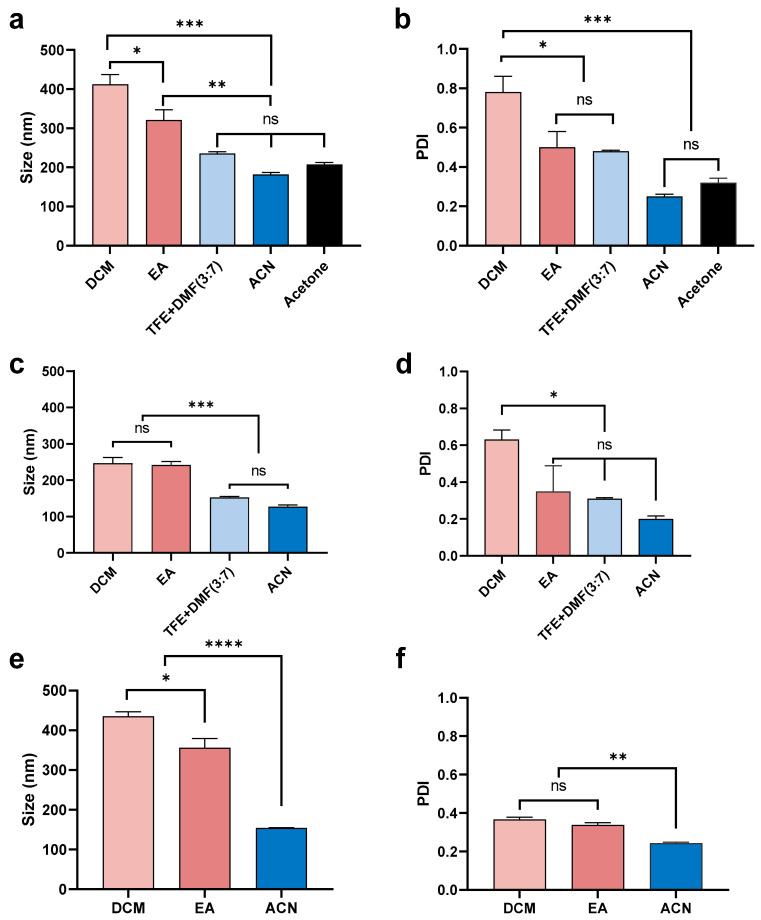Figure 3.
Mean (±SEM) (n = 3) size (a) and PDI (b) of blank nanoparticles formulated using a low sides/centre flow rate ratio (60/4.5) using 1% PLGA in a range of organic solvents (DCM, EA, TFE + DMF (3:7, v/v), ACN, and acetone). Nanoparticles fabricated using DCM had the largest size (400 nm) and the highest PDI (0.8). By comparison, use of ACN resulted in particles of the smallest size (<200 nm) and lowest PDI (~0.2). Mean (±SEM) (n = 3) size (c) and PDI (d) of blank nanoparticles formulated using a high sides/centre flow rate ratio (120/3) using 1% PLGA in different organic solvents (DCM, EA, TFE + DMF (3:7, v/v), and ACN). Both DCM and EA produced particles of a larger size (~250 nm) compared with ACN (~100 nm). DCM provided the highest PDI (0.6) while ACN led to the lowest PDI (<0.2). Mean (±SEM) (n = 3) size (e) and PDI (f) of 5% theoretical drug-loaded nanoparticles formulated with a low side/centre flow rate ratio (60/4.5) using 1% PLGA in different organic solvents (DCM, EA, and ACN). DCM provided a larger particle size (>400 nm) compared with EA (~350 nm) and ACN (150 nm). Solvents did not show a significant difference in PDI (0.2~0.3). One-way ANOVA analysis followed by Tukey test for multiple comparisons (**** p < 0.0001; *** p < 0.001; ** p < 0.01; * p < 0.05; and ns, no significant difference).

